Helen Weston interview: Artistic satisfaction of sculpting
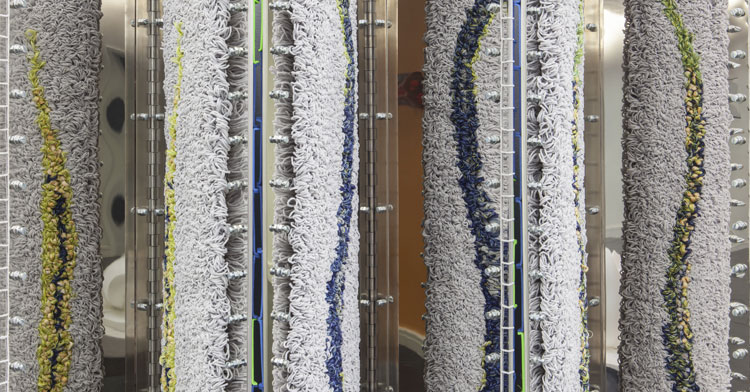
Helen Weston is formally trained in textile arts while best known for her magnificent work with sculptures. Evidenced throughout her work is the interplay between psychological and physical spaces.
Although art is her primary passion, she prefers an equal dose of time spent outside the studio serving both postgraduate and undergraduate students as an educator.
Helen has appeared in numerous publications, including ‘Collect‘ in 2007 and ‘Of Material Concern’ in 2004.
Helen Weston was kind enough offer to offer us an interview. She explains her accidental discovery of textile art, her role as both an artist and an educator, as well as fascination with children’s stories and nursery rhymes as sources of inspiration.
A certain affinity
TextileArtist.org: What initially captured your imagination about textile art?
Helen Weston: It didn’t really happen for me in this way. There was nothing sudden, no light bulb moment. It was a gradual interest that was concentrated towards textile art when I was studying for my degree in industrial textile design.
The category of ‘textile art’ and its very particular history didn’t really surface for me until I realized that I didn’t want to become a textile weave designer, and this was quite early on in my degree. The structure of that course was technically dense but underpinned by a strong visual research / studies ethos. This became one of the most important and enjoyable elements for me and I began to see it as more than just generating visual information that would be translated into a woven fabric for a specific use. It became a way of communicating things that meant something for me and I wanted to try and get this through the initial paperwork, sketchbook and canvas into the textile.
I also wanted the textile to be free of a function and to exist for itself. So I think my imagination was captured not by any exterior inspiration, but by a need I had to communicate and make meaningful work using textiles, with which I had always had a certain affinity towards.
Of course, it did help when I realized that there was such a rich history of other artists who had travelled a similar path.
An artist and educator
What or who were your early influences and how has your life/upbringing influenced your work?
I grew up a few miles away from St. Ives in Cornwall in the picturesque village of Mousehole. I was very lucky to grow up in a place that was so naturally beautiful and I spent a lot of time walking and drawing and watching the various moods of the Atlantic. It allowed me to be imaginative, reflective and creative and was the ultimate escape.
I was familiar with local painters, designers and craftspeople as well as the history of the St. Ives School and the Newlyn School of painters. Barbara Hepworth was a huge inspiration to me as was Ben Nicholson. Being surrounded by this creativity and inspiration both contemporary and historical I think gave me a certain sensibility from my teenage years onwards.
It was easy to pop into the local art gallery in Newlyn and see contemporary artwork as well as peer into the small artist studios and galleries that sold seascapes and landscapes. I took it all for granted at that point, being surrounded by such creativity.
It sounds completely idyllic, but winters are hard in isolated coastal places that rely on the summer tourist season. There is no doubt that growing up at the farthest southerly point of England had its positive and negative aspects, and this certainly had an impact on me as did my family life. These things impact us all – its whether or not we then feel an urge to express it in any way. I found that I did, but not until I had left Cornwall to study.
What was your route to becoming an artist?
I went to Falmouth School of Art to do a BTEC Foundation Diploma. From there, I went on to the Scottish College of Textiles (SCOT), as it was known at the time. It is a faculty of Heriot Watt University in Edinburgh, and there I studied Industrial Textile Design, specialising in woven fabric. After a little break, I decided to do the MA in Textiles at Goldsmiths under Professor Janis Jefferies. There is no longer a BA Textiles or MA Textiles at Goldsmiths now, and it’s a sign of how contemporary art has changed of the last 60 years.
I think I ended up being an artist by accident. It wasn’t my intention when I was growing up. Even though I grew up in an artistic community, I still didn’t think it was for me and didn’t think I would be able to do it. I think of myself even now as an artist and educator, as both are as important to me. I could never be the type of artist who works in a studio everyday. I enjoy the interaction with students and sharing a passion about textiles with them.
The work treads a line
What is your chosen medium and what are your techniques?
I make sculptural pieces both on and off the wall. The pieces use sheet metal that is mostly rolled, sometimes flat, but always layered and sandwiched together. I consider this a construction.
The sheets can be copper, brass, aluminum, perforated steel or mirror polished steel. Sometimes the surfaces are distressed or engraved in someway. The sheets are cut with a jigsaw or steel cutter, and then drilled and bolted together. The softer or more traditionally recognisable textile element can be woven on a loom or tapestry frame, gun-tufted, threaded, laced, or stitched.
How I approach and think about the construction of my sculptures is driven by my interest and training in woven construction. The underpinning of my work is very much from a textile base.
How would you describe your work and where do you think it fits within the sphere of contemporary art?
I would describe the product of my practice as sculpture, although I have always struggled with describing myself and it has fluctuated over the years I’ve been making work. However, from the point of a commercial gallery and possible viewer’s perspective, I do not fit easily into a particular discipline. The work treads a line between textile and metal, fine art, craft, and applied art. I have found that it is a difficult line to tread in relation to securing galleries and exhibitions. But the term sculpture now seems to be the best fit.
Conceptually, I would say that my work plays with a mixture of themes, touching on autobiographical traces. I tend to make to make multiple pieces of work based on a particular area of research or theme that I am investigating. These works will have a similar style, using materials in the same way but just shifting aspects slightly. The combination of textile elements and processes with metal work references both a domestic and decorative aesthetic whilst juxtaposing it with a utilitarian feel.
Tell us a bit about your process and what environment you like to work in?
I work in various environments and do not favour one over another. I do like the variation although sometimes I think it would be great to have a studio that had all the equipment that I need!
Working at Goldsmiths, I am incredibly lucky to be able to use the facilities. I spend a considerable amount of time in the metalwork area whenever I am not teaching in my own textiles lab. I can also use the textile facilities over the weekend or in the evenings when I am not working with students. I start at home with the visual research first, which might entail looking at archive images of armour for example from a museum’s website. It might also include visiting a particular collection where I would take photographs or do sketches. I’ll then play around with sketches of what I would like the piece to look like. Sometimes, I’ll make a very basic metal machete and sometimes the piece will start from the textile itself.
Conscious of shape and small details
Do you use a sketchbook?
Many years ago I used sketch books, now I tend to use loose sheets of paper I then put into some kind of book or folder. My drawings are mostly technical sketches with a lot of annotation concerning how I might go about making the object, things to remember to do, as sometimes the processes can be complicated.
There might be some inspirational photographs, too, of details that I’d like to incorporate. I also take photographs as I am making the work so that I can see what I’m doing through a different medium as it helps to re-evaluate each stage and see if the piece is actually working. I also combine these into the book so that the process is documented to help me make the next piece.
What currently inspires you and which other artists do you admire and why?
I draw inspiration from all kinds of areas and aspects of art and design. I admire the book illustration of Edward Gorey and Shaun Tan for example. I have always been interested in textile design, particularly woven fabrics and rugs. I like any textile that has a strong constructed element to it, largely due to my initial training.
Currently, I am obsessed with lighting, contemporary and mid-century furniture because of the shapes produced, the methods of construction and the combination of materials. I am very conscious of shape and small details, such as the joins and connections within a piece.
In terms of artists, I am currently very inspired by Richard Deacon’s work after seeing his show at the Tate in the summer. How he constructed his pieces I found completely fascinating.
Barbara Hepworth’s work has been a constant inspiration since I was young. So too has Louise Bourgeois’s work and career. Other artists who have influenced me are include Rachel Whiteread, Cornelia Parker, and Anish Kapoor.
Tell us about a piece of work you have fond memories of and why?
I don’t have any one piece that I’m fond of. I suppose I tend to be more obsessed with the most recent piece I’ve made. The creation of each piece has its own joy, stress and artistic satisfaction. The process itself is the most enjoyable part; often the final creation is initially disappointing to me. It takes a few months or the next piece to be underway for me to reconsider the last piece and grow to like it or think it works, or that it’s good enough, or resolved!
You have to persevere
How has your work developed since you began and how do you see it evolving in the future?
It is difficult to quantify how the work has developed over the years. I suppose I think about how my themes and concepts have shifted rather than the actual objects. However, I did have a show this year with a friend where I showed work dating from 2002 to now, which for the first time gave me a sense of my work as a whole.
The work has naturally developed for the better over the last 15 years; it has got more playful, more decorative, less spiky and overtly aggressive. The sinister content is more subtle and refined. I have become more skilled at handling the materials I use and working with specific processes even though some processes shift from one piece to the next. I’ve found that I learn so much making a piece of work that this experience always goes into the next piece. But I find I have to continually push myself, keep asking myself why I am making the decisions I’m making, and why those shapes are important to me.
Conceptually, ideas shift as you get older. You revisit themes and have a slightly different thought about them than you might have had 10 years ago. Development is not necessarily linear. I consider the future as far as the next piece of work, this is what keeps me making and I am always surprised when I look at a finished piece.
What advice would you give to an aspiring textile artist?
It’s difficult and you have to persevere. Above all you have to have a passion and a need or drive to express yourself visually in order to maintain a practice.
Can you recommend 3 or 4 books for textile artists?
- Textile – Mary Schoeser (Thames and Hudson)
- Radical Lace and Subversive Knitting (Museum of Arts and Design)
- In the Loop – Knitting Now (Jessica Hemmings)
- Techno Textiles 2 – Revolutionary Fabrics for Fashion and Design(Thames and Hudson)
- Radical Thread. The 62 Group 1962-2012 (Lesley Millar)
What other resources do you use?
Museum websites, particularly access to image archives. I also take photographs and take inspiration from exhibitions.
Opportunities present themselves
What piece of equipment or tool could you not live without?
I use such a variety of equipment that I do not have a favorite piece. I suppose it’s more about the materials than the tools. For me inspiration comes from handling materials, this could be a small piece of copper or a brass bolt as well as a beautiful woolen yarn or an enameled copper thread. I could not live without the materials themselves.
Do you give talks or run workshops or classes? If so, where can readers find information about these?
I have given talks and lectures in the past when invited but I do not do workshops. This is because of my workload. I teach undergraduate and postgraduate students constructed textiles at Goldsmiths College, managing the art departments constructed textiles research laboratory.
How do you go about choosing where to show your work?
It just depends on what opportunities present themselves, either locally or nationally. I have consistently shown work with the 62 Group of Textile Artists since 2003 both nationally and internationally. I’ve managed to have one or two shows a year since I graduated from Goldsmiths in 1998.
Where can readers see your work this year?
At this point, I am not sure!
Where fantasy and fear reside
What else would you like us to know?
I am fascinated by children’s stories, rhymes and illustrations that give a feeling of an internalized, imaginary world. More often than not, these mediums are intended for children although when revisiting them, the adult eye uncovers another layer, a masked content and an ambiguity in relation to the intended reader. The work hints at childhood experience and family dynamics by exploring rhythms between pieces; playing with uneasy feelings of isolation and vulnerability.
The relationship and connection between interior and exterior has remained a core concern. ‘Caught’, ‘Crawling through’ and ‘Hold-Up’ (2002 – 2004) are part of a large floor installation that looks at this. The interplay between psychological spaces and physical shapes, where fantasy and fear reside, where boundaries blur and connect, continues to intrigue me. The cylindrical shape as a vessel as carrier, protector from the outside world rather than, as a vehicle of isolation is investigated in many of the pieces, such as ‘Revolver’ and ‘Tagged’ (2007 – 2008).
Much of the work explores the subjects of support, reliance, protection, and/or obstruction, intimidation and hostility. Sometimes these are addressed separately but more often they are aspects within the same piece. I use various thematic devices to hint at these concerns. For example, the childhood game of cats cradle in ‘Cradle’ (2008), ‘Laced’ (2008) and ‘Stack’ (2009). There is a playfulness in these pieces, however by manipulating the tensile character of cord, a physical and emotional tension is produced resulting in small secretive objects.
In recent years I have been researching armour from different cultures, such as its physical and psychological significance to the wearer, as well as how it is constructed and its aesthetic detail. Again, concerns around protection are explored through the pieces such as ‘Chink in the armour’ (2012) and ‘Grandguard Butterfly’ (2012). Stitched detailing in these works references weave designs commonly found in men’s suiting fabrics. However the woollen thread and extruded or repeated shapes add a peculiarity, which questions the armour’s usefulness.
For more information, please visit: www.helenweston.com

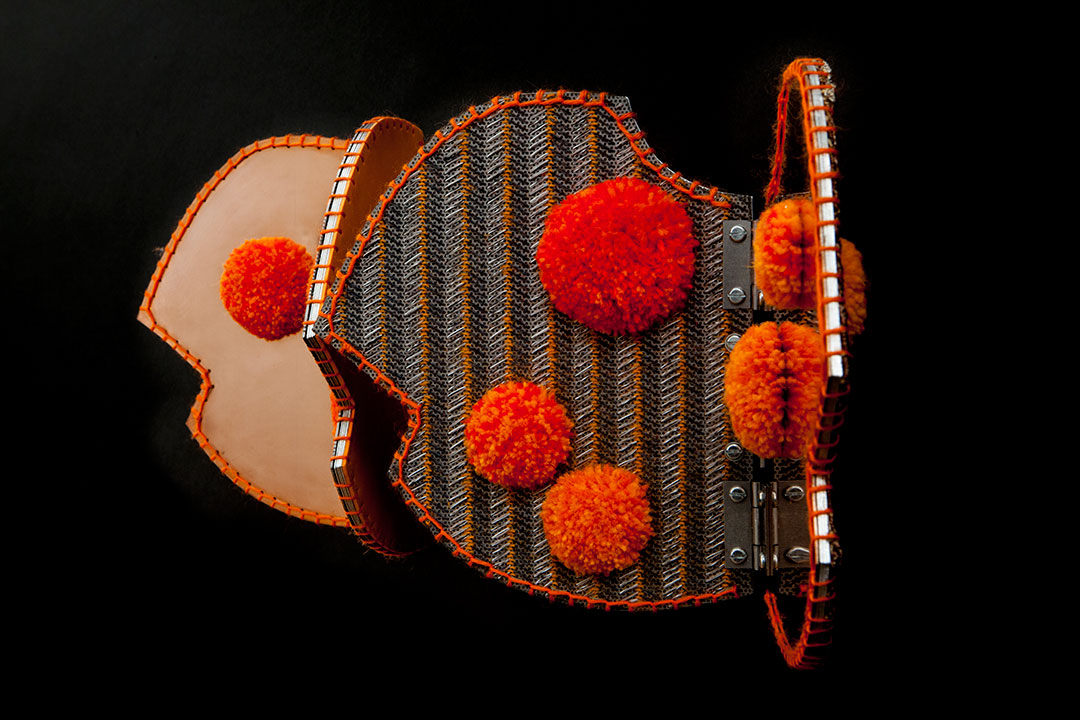
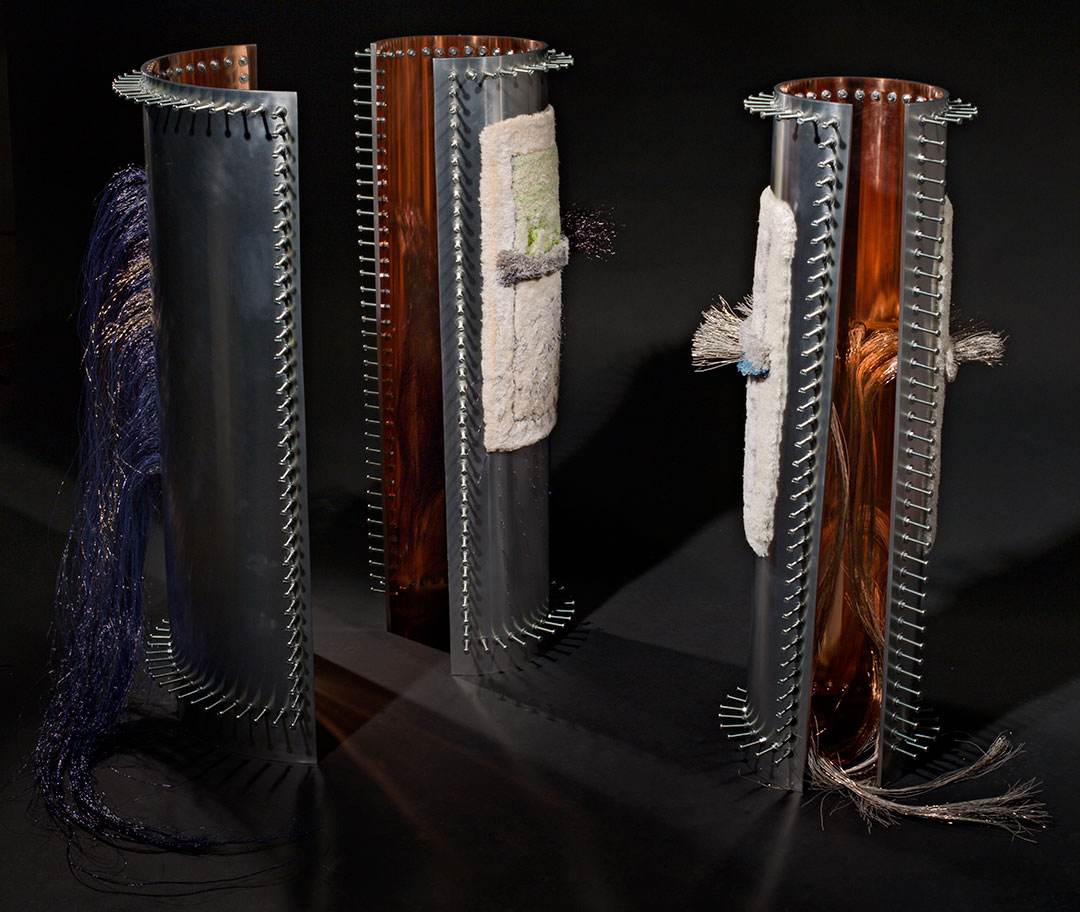
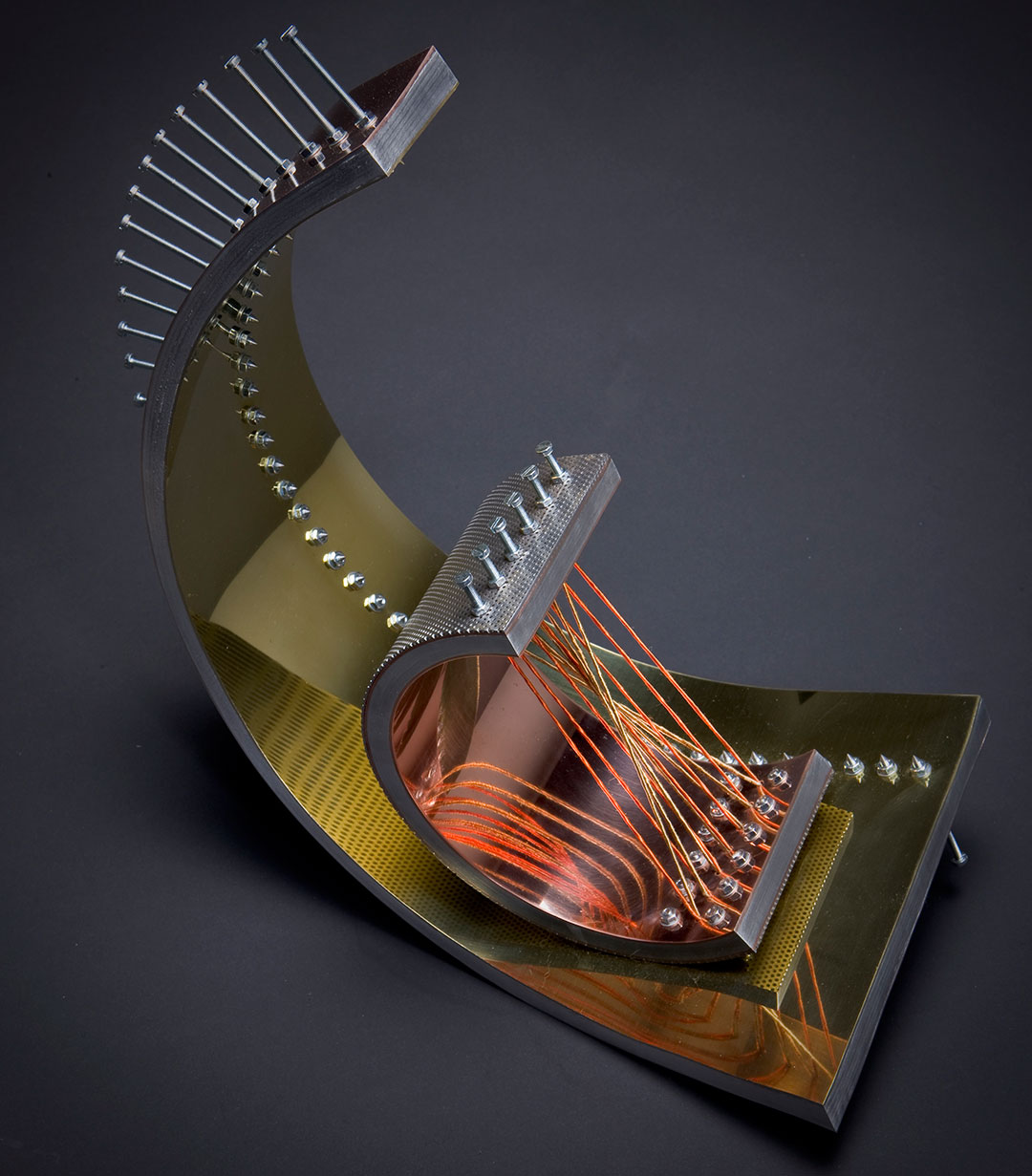
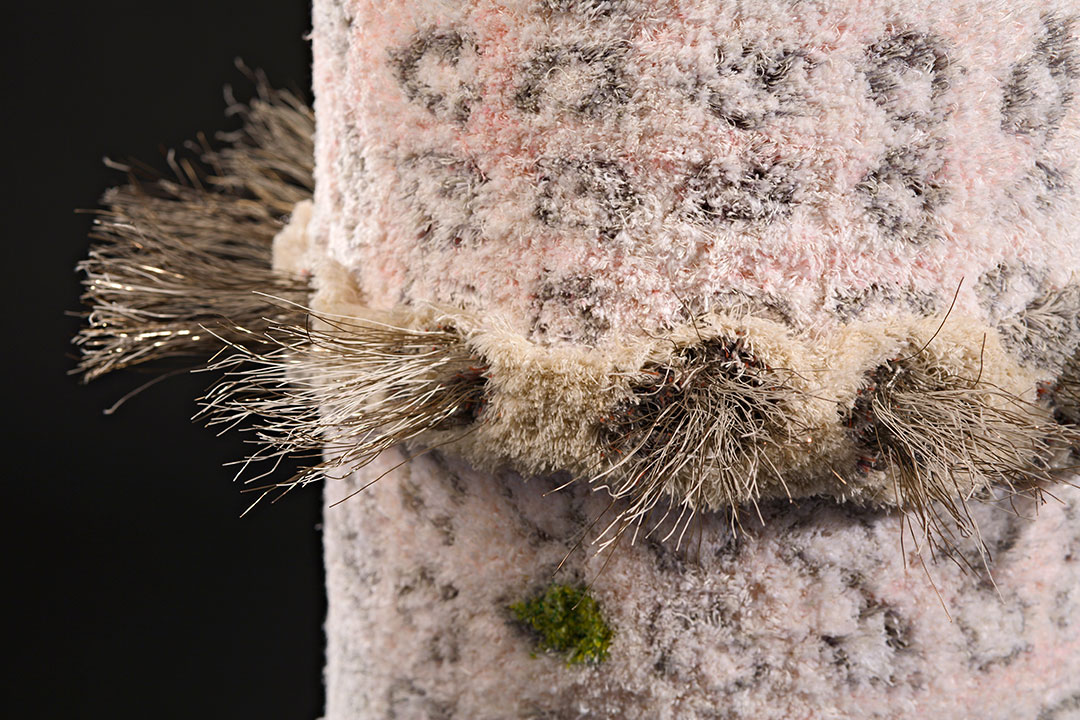
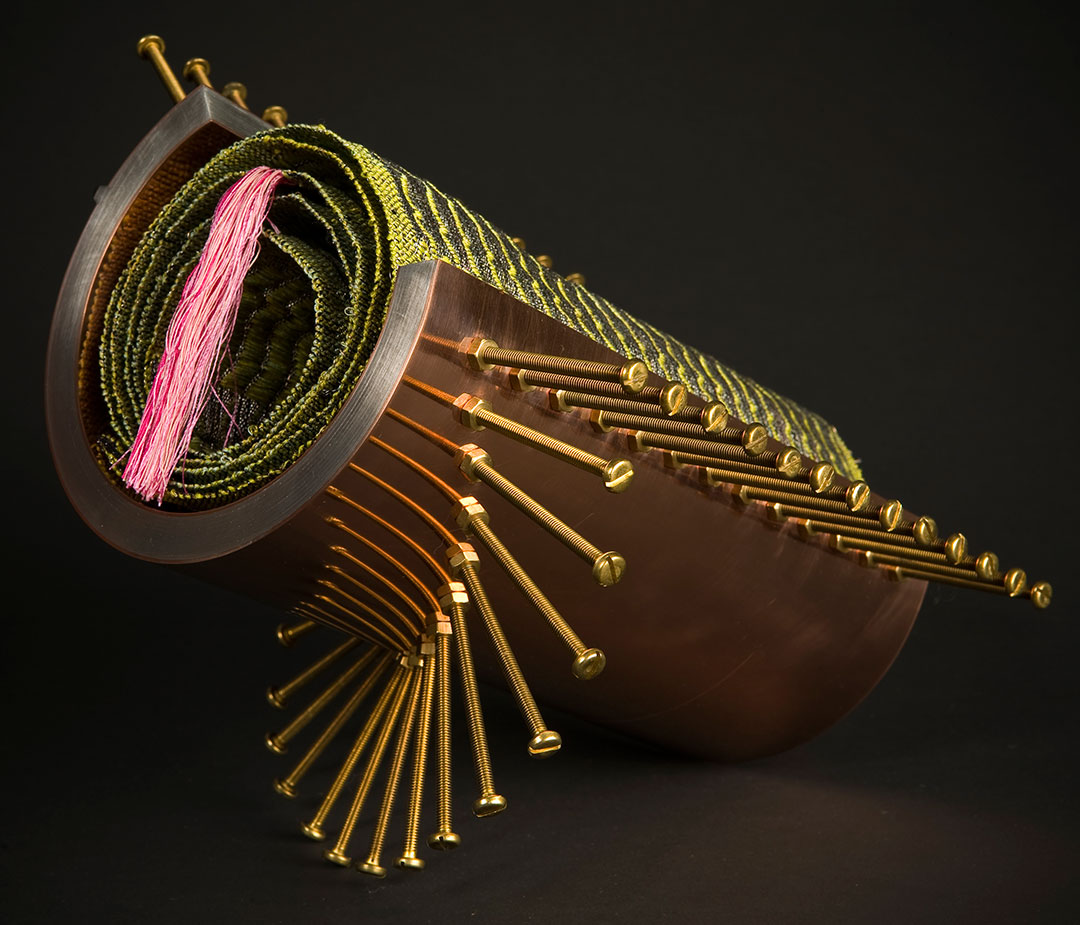
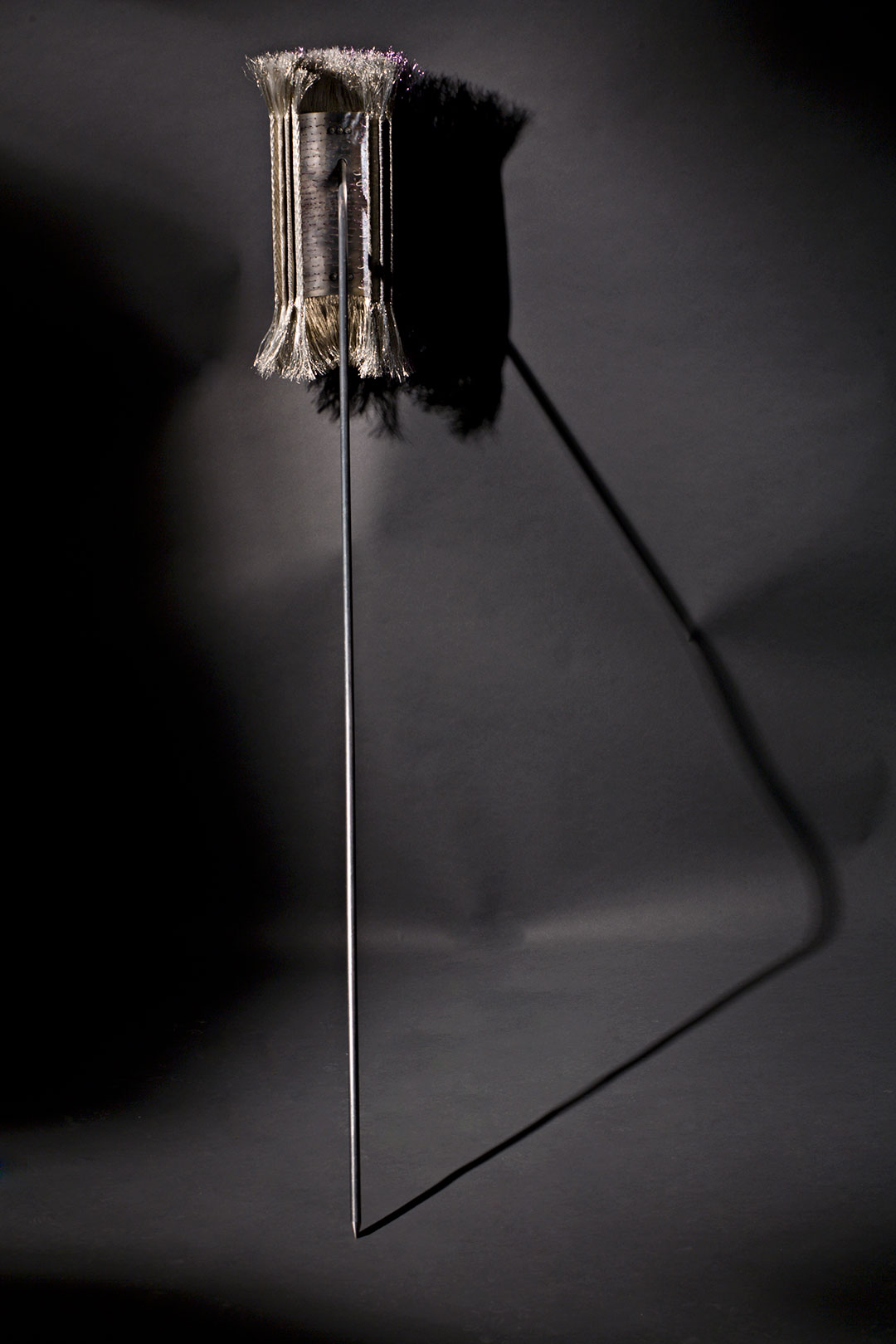















Hi Helen
Have you just lost your purse in Penryn. Call me on 07831 128646.
Claire